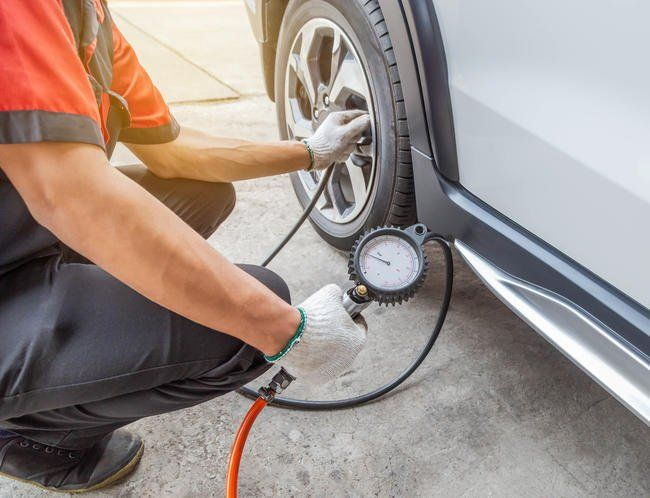
Tire Pressure Guide: How to Check and Maintain Proper Tire Pressure | Estbnh

Maintaining the correct tire pressure is essential for your vehicle’s safety, performance, and fuel efficiency. Proper tire pressure ensures optimal contact between your tires and the road, giving you better control, comfort, and longer-lasting tires. At Estbnh, we help drivers understand why checking and maintaining the right tire pressure is crucial for every journey.
Why is Proper Tire Pressure Important?
Safety and Control
Correct tire pressure significantly reduces the risk of tire blowouts and loss of control, especially during emergency maneuvers or on wet roads. According to the National Highway Traffic Safety Administration (NHTSA), under-inflated tires are a leading cause of tire-related accidents.
Performance and Fuel Efficiency
Properly inflated tires reduce rolling resistance, improve handling, and save fuel. Studies show that a drop of just 1 PSI in tire pressure can increase rolling resistance by 1.1%, leading to a 6-10% rise in fuel consumption.
Tire Longevity
Maintaining the recommended tire pressure distributes your vehicle’s weight evenly across the tire tread, preventing uneven wear and extending tire life. Over- or under-inflated tires wear out faster and less evenly.
How to Find the Correct Tire Pressure for Your Vehicle
Check the driver’s side door jamb or your vehicle’s owner manual for the manufacturer’s recommended tire pressure (usually in PSI).
Do not rely on the maximum pressure printed on the tire sidewall; this is not the recommended operating pressure.
Steps to Check Your Tire Pressure
Use a reliable tire pressure gauge (available at Estbnh).
Check your tires when they are cold, ideally before driving or after parking for several hours.
Compare the gauge reading to the recommended tire pressure.
Inflate or deflate the tires as needed to reach the correct pressure.
Repeat for all tires, including the spare.
Signs of Incorrect Tire Pressure
Low tire pressure: Uneven tire wear on the edges, increased fuel consumption, poor handling, and higher risk of blowouts.
High tire pressure: Center tread wear, a harsher ride, reduced road contact, and decreased traction.
Tips for Maintaining Proper Tire Pressure
Check your tire pressure at least once a month and before long trips.
Use a high-quality tire pressure gauge from Estbnh.
Always follow the manufacturer’s recommended tire pressure values.
Monitor your vehicle’s Tire Pressure Monitoring System (TPMS) if equipped.
Repair any punctures or damage promptly.
Remember that temperature changes affect tire pressure; it typically drops in cold weather and rises in hot weather.
Frequently Asked Questions
What is the recommended tire pressure?
It varies by vehicle and tire size, but most passenger cars require between 30-40 PSI.
When should I check my tire pressure?
Check when tires are cold, ideally every month or before long journeys.
Does tire pressure affect fuel consumption?
Yes, low tire pressure increases rolling resistance and fuel use.
How do I know if my tire pressure is incorrect?
Look for uneven tire wear, poor handling, or TPMS warnings.
Should I check the spare tire pressure?
Yes, always check the spare tire regularly.
Why Choose Estbnh for Your Tires and Tire Pressure Needs?
Wide selection of genuine tires.
High-quality tire pressure gauges and tools.
Fast delivery and professional installation.
Full warranty and after-sales support.
Expert advice and maintenance tips.
Shop now at Estbnh for the best tires and tire pressure tools to keep your vehicle safe and efficient.
References:
NHTSA - Tire Pressure Maintenance: https://crashstats.nhtsa.dot.gov/Api/Public/ViewPublication/811086
University of South Florida - Effect of Tire Pressure on Efficiency: https://digitalcommons.usf.edu/ujmm/vol2/iss2/7
Department of Transportation - NHTSA Tire Labeling: https://www.nhtsa.gov/sites/nhtsa.dot.gov/files/tirelabeling.pdf
If you are a vendor Click here
Notifications

List is Empty :)
Nothing to read for now. There is no any Notification here




 ar
ar 
 En
En